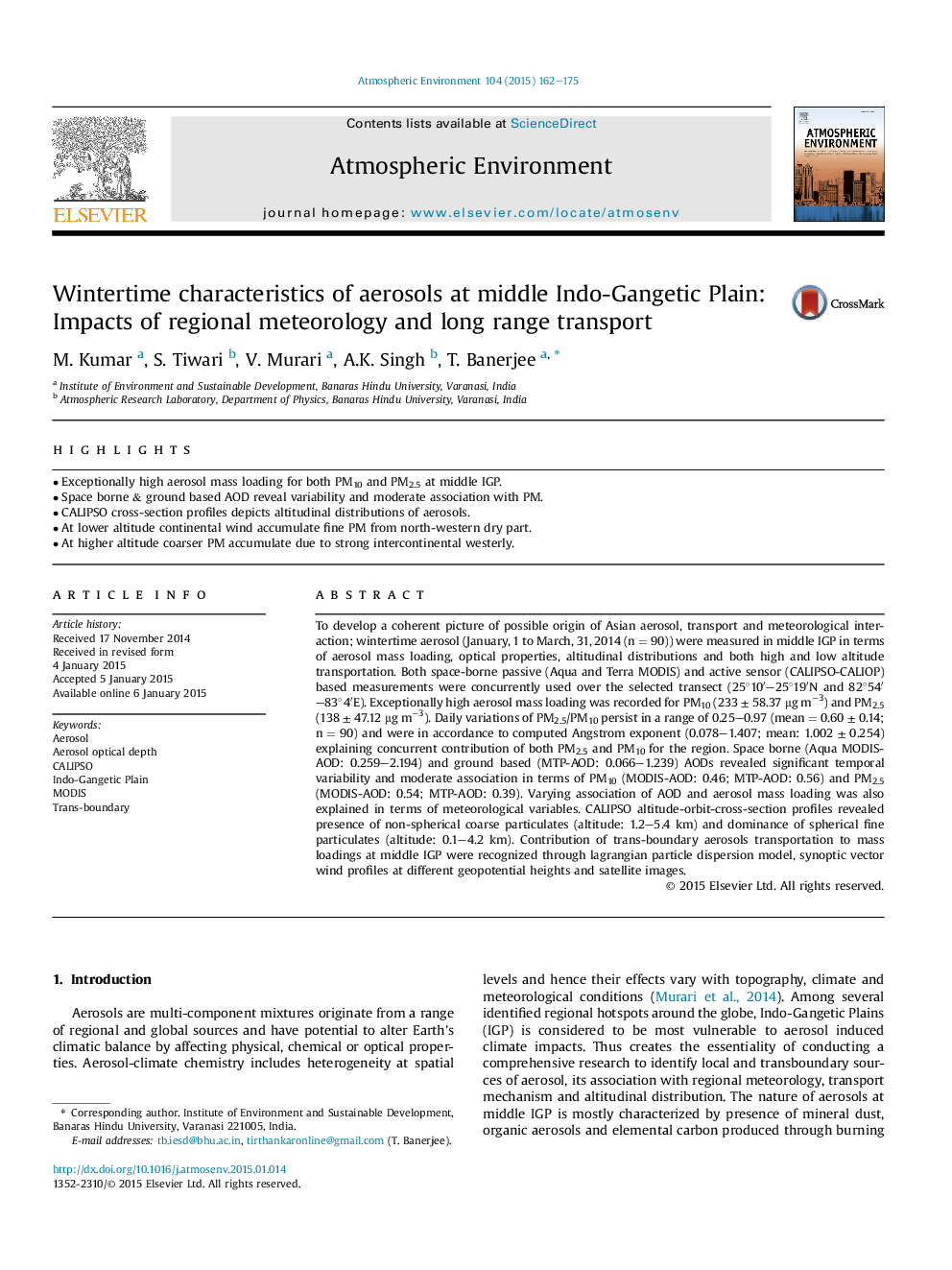| Article ID | Journal | Published Year | Pages | File Type |
|---|---|---|---|---|
| 6338784 | Atmospheric Environment | 2015 | 14 Pages |
Abstract
To develop a coherent picture of possible origin of Asian aerosol, transport and meteorological interaction; wintertime aerosol (January, 1 to March, 31, 2014 (n = 90)) were measured in middle IGP in terms of aerosol mass loading, optical properties, altitudinal distributions and both high and low altitude transportation. Both space-borne passive (Aqua and Terra MODIS) and active sensor (CALIPSO-CALIOP) based measurements were concurrently used over the selected transect (25°10â²-25°19â²N and 82°54â²-83°4â²E). Exceptionally high aerosol mass loading was recorded for PM10 (233 ± 58.37 μg mâ3) and PM2.5 (138 ± 47.12 μg mâ3). Daily variations of PM2.5/PM10 persist in a range of 0.25-0.97 (mean = 0.60 ± 0.14; n = 90) and were in accordance to computed Angstrom exponent (0.078-1.407; mean: 1.002 ± 0.254) explaining concurrent contribution of both PM2.5 and PM10 for the region. Space borne (Aqua MODIS-AOD: 0.259-2.194) and ground based (MTP-AOD: 0.066-1.239) AODs revealed significant temporal variability and moderate association in terms of PM10 (MODIS-AOD: 0.46; MTP-AOD: 0.56) and PM2.5 (MODIS-AOD: 0.54; MTP-AOD: 0.39). Varying association of AOD and aerosol mass loading was also explained in terms of meteorological variables. CALIPSO altitude-orbit-cross-section profiles revealed presence of non-spherical coarse particulates (altitude: 1.2-5.4 km) and dominance of spherical fine particulates (altitude: 0.1-4.2 km). Contribution of trans-boundary aerosols transportation to mass loadings at middle IGP were recognized through lagrangian particle dispersion model, synoptic vector wind profiles at different geopotential heights and satellite images.
Related Topics
Physical Sciences and Engineering
Earth and Planetary Sciences
Atmospheric Science
Authors
M. Kumar, S. Tiwari, V. Murari, A.K. Singh, T. Banerjee,
